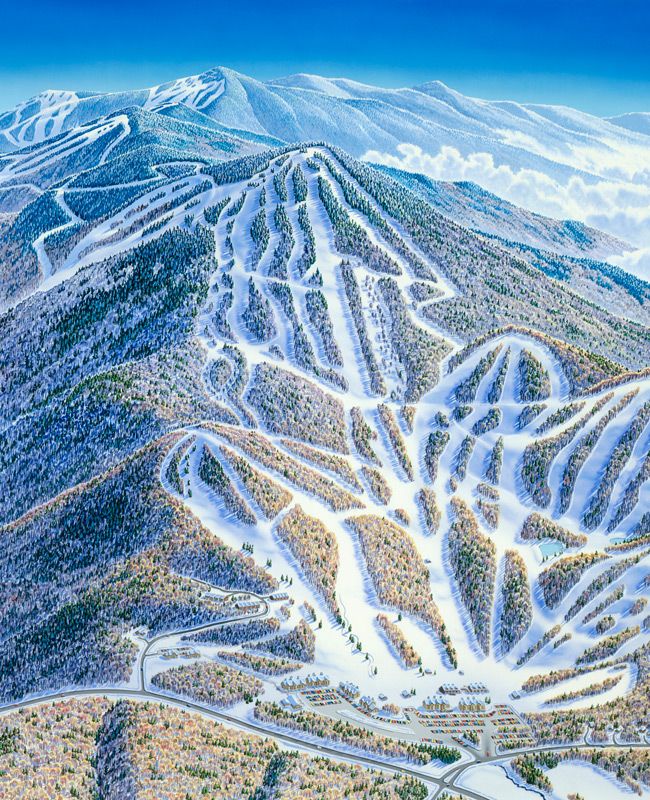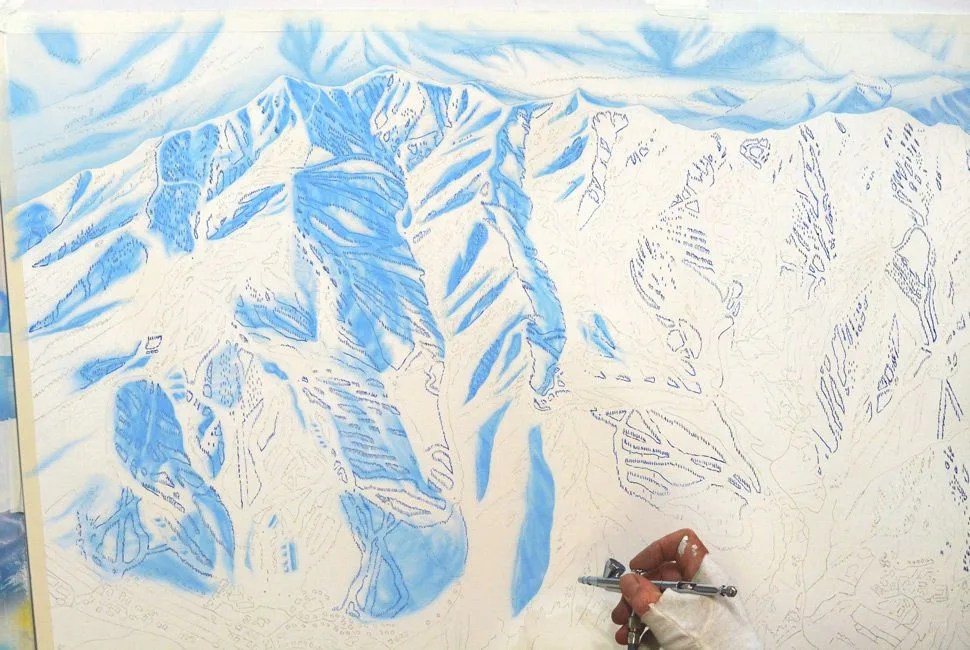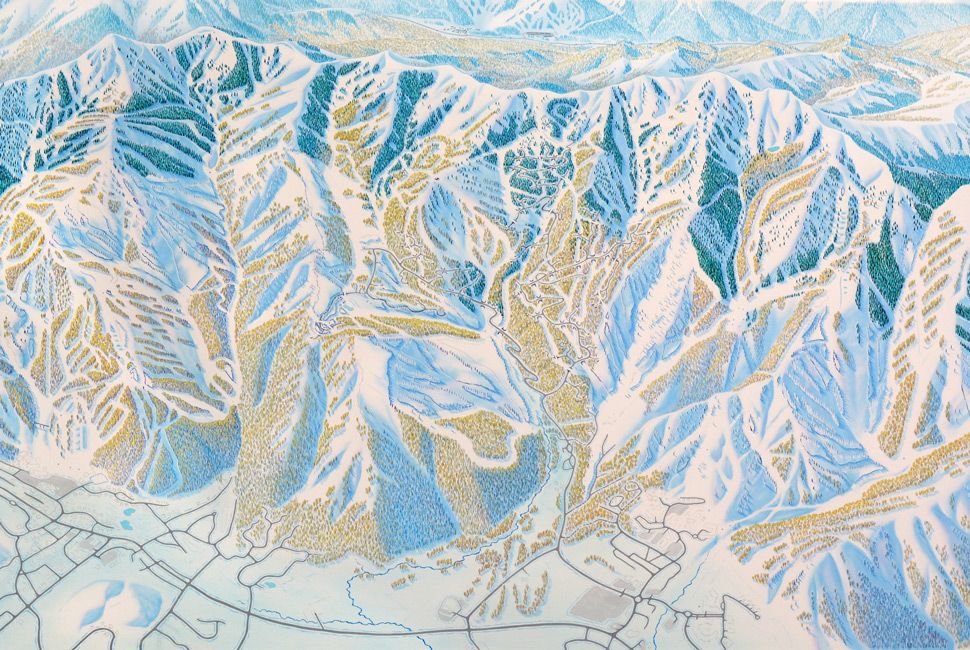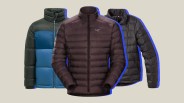The name “James Niehues” may not strike home immediately, but if you’re a skier, you’ve undoubtedly held his work. Niehues has painted roughly 255 ski trail maps, for 175 different resorts, including some of North America’s most iconic slopes. To the west: Alta, Big Sky, Park City, Heavenly, Mammoth, Snowbird, Squaw Valley, Sun Valley, Telluride, Taos and Vail all have Niehues’s name on their trail map. To the east: Killington, Mt. Snow, Okemo, Smugglers Notch, Stowe, Stratton, Sugarloaf, Sunapee and Sunday River.

For resorts, having Niehues’s signature on their trail map gives them clout and prestige. It’s like having Jimmy Chin film a mountaineering documentary or having Russell James shoot a cover photo. Now 72, Niehues didn’t start painting trail maps until after his 40th birthday. As for how he got into the industry, it started with being in the right place at the right time.
In 1988, after years working in several ad agencies, a print shop and even working as a courtroom illustrator, Niehues was looking to change careers. He had moved to Denver and, because he admired Bill C. Brown’s work, he reached out to him. Brown was also living in Denver. As the protégé of Hal Shelton (the original trail map painter, in the ’60s), Brown had been painting trail maps since the ’70s. And by the late ’80s, after nearly two decades in the industry, he was trying to pursue other passions. When Niehues approached him, Brown agreed to see his illustrations.
When they met, Brown had already been hired by Winter Park Resort to paint the backside of Mary Jane. And he had time to do it, so he let Niehues have a go. “The thought was if [mine] didn’t pass, he could still go ahead and do it,” says Niehues. “So I did it, spent about a month at it, and when he showed it to the client they never knew that Bill hadn’t done it. And then he brought it back to me and I signed it. That was my first illustration.”
To properly photograph a mountain, for mapping purposes, Niehues needs to get 2,000 feet above the summit. At this height he can see “into the trees” instead of just looking across to the horizon.
On any project, Niehues requires aerial photos of the mountain. “These photographs are for information, not for composition or quality,” says Niehues. “So anybody can shoot them.” Niehues takes a lot of these photos himself. When it’s not him, he prefers to work with amateurs who aren’t after that one Chris Burkard-like moment of magic. There have been numerous times, he says, where the photos had to be reshot because they didn’t capture the right information.






